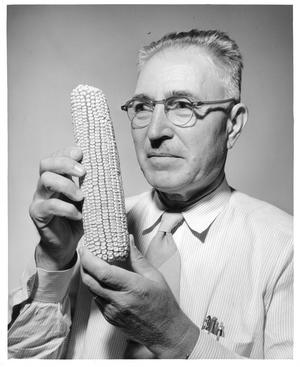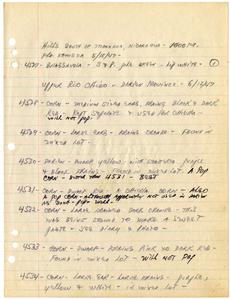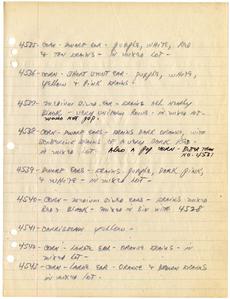 During the holidays, it is a tradition in my family for everyone to get together and go see a movie in the theaters. While the action and the company are nice, what I really love is the popcorn! There are many different flavors of popcorn out there, but the flavors are usually determined by what is put on the popped kernels, such as chocolate or caramel, and not on the natural flavor of the popcorn itself. With all the different varieties of corn you can buy at the grocery store, have you ever wondered which one would make the best popcorn? Well, while digitizing the field books of American botanist Paul Allen, I discovered that he pondered the answer to that very question, and decided to do some testing of his own.
During the holidays, it is a tradition in my family for everyone to get together and go see a movie in the theaters. While the action and the company are nice, what I really love is the popcorn! There are many different flavors of popcorn out there, but the flavors are usually determined by what is put on the popped kernels, such as chocolate or caramel, and not on the natural flavor of the popcorn itself. With all the different varieties of corn you can buy at the grocery store, have you ever wondered which one would make the best popcorn? Well, while digitizing the field books of American botanist Paul Allen, I discovered that he pondered the answer to that very question, and decided to do some testing of his own.
Paul Hamilton Allen was born in Oklahoma in 1911. After high school, he joined the Missouri Botanical Garden as a student apprentice, where he got his start as a botanist. He went on to manage the Missouri Botanical Garden’s field station in Panama from 1936 to 1939, allowing him to be one of a handful of American botanists with experience in the tropics by the time World War II started. Allen used this tropical experience to support the war effort by joining the United States Rubber Development Corporation where he helped obtain rubber from trees in Columbia.

After the war was over, he resumed his overseas work on orchids. It was during one of his collecting trips to Panama in 1947 that Allen came across a spot in the Darien Province that contained numerous varieties of corn. Being the good scientist that he was, Allen decided to try popping different types and tasting them to determine the best variety for consumption. Of the nineteen different varieties of corn Allen described in his notes from that area, he only chose to test six of them. Allen achieved success with three of the corns he popped, writing for the other entries "will not pop" or "would not pop." He then ranked the three varieties of "popped" corn in order by taste. Allen noted that the least appealing popcorn came from a variety of corn that is used to make chicha, a Central American drink that is usually made from germinated corn. He describes the winning corn as being "dwarf yellow – with scattered purple and black grains," which is certainly a change from the white or yellow color of modern day popcorn.
After his experimentation with popcorn, it seems Allen fell for another type of food. In 1959, he went on to work for the United Fruit Company on a major banana breeding project, where he collected specimens from around the world until his death in 1963.
So the next time you are watching a movie and enjoying a bowl of popcorn, thank scientists like Paul Allen for their taste-testing efforts!
Related Resources
- Hunt Institute for Botanical Documentation, Paul Hamilton Allen Records
- Field Book Project, Smithsonian Institution Archives/National Museum of Natural History
Related Collections
- Accession 11-101 - Paul Hamilton Allen Field Books, 1936-1961, Smithsonian Institution Archives
Produced by the Smithsonian Institution Archives. For copyright questions, please see the Terms of Use.

Leave a Comment